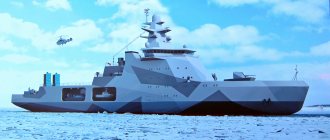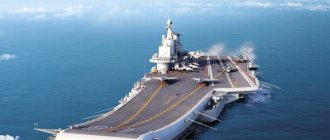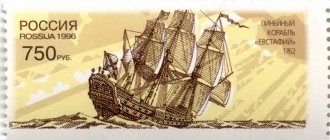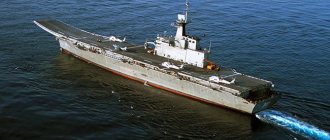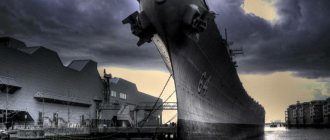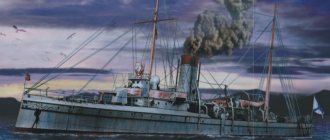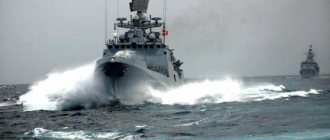17th century Spanish fleet
Spain continued to form its armadas with large galleons, the unsinkability and strength of which were proven by the results of the battles of the Invincible Armada with the British. The artillery the British had was unable to inflict damage on the Spaniards.
Therefore, Spanish shipbuilders continued to build galleons with an average displacement of 500 ÷ 1000 tons and a draft of 9 feet, creating an ocean-going ship - stable and reliable. Such ships were equipped with three or four masts and about 30 guns.
In the first third of the century, 18 galleons with up to 66 guns were launched. The number of large ships exceeded 60 against 20 large royal ships of England and 52 of France.
The features of durable, heavy ships are their high resistance to staying in the ocean and combating water elements. Installing straight sails in two tiers did not provide maneuverability and ease of control. At the same time, the lack of maneuverability was compensated by excellent survivability during storms in terms of strength parameters, and the versatility of galleons. They were used simultaneously for trade and military operations, which were often combined during an unexpected meeting with the enemy in the vast waters of the ocean.
The extraordinary capacity made it possible to equip ships with a decent number of weapons and take on board a large crew trained for combat. This made it possible to successfully carry out boarding - the main naval tactics of battles and capture of ships in the arsenal of the Spaniards.
Project 11661 corvettes today
In 2022, the place of the flagship of the Caspian military flotilla was taken by a newer and more advanced ship “Dagestan”. In terms of its tactical and technical characteristics, this ship fully complies with the requirements for ships of this class. A reference to its past, in which the ships were planned to be built as ordinary patrol ships, would not be appropriate today. The range of weapons makes these ships full-fledged combat vessels capable of resisting any enemy at sea. In the Caspian Sea, the new Russian corvettes of Project 11661K "Gepard" have no equal, both in displacement and firepower.
17th century navy
The 17th century was a rich period in the history of shipbuilding. Ships have become faster, more maneuverable, and more stable. Engineers learned to design the best examples of sailing ships. The development of artillery made it possible to equip battleships with reliable, accurate guns. The need for military action determined progress in shipbuilding.
Warships by Age and Country
The most powerful ship at the beginning of the century
The beginning of the 17th century marks the dawn of the era of battleships. The first three-decker was the British HMS Prince Royal, which left the Woolwich shipyard in 1610. The British shipbuilders took the prototype from the Danish flagship, and subsequently rebuilt and improved it several times.
HMS Prince Royal
Four masts were installed on the ship, two each for straight and lateen sails. The three-deck, originally 55-gun, ship in its final version in 1641 became 70-gun, then changed its name to Resolution, returned the name, and in 1663 already had 93 guns in its equipment.
- Displacement about 1200 tons;
- Length (keel) 115 feet;
- Beam (midship) 43 feet;
- Interior depth 18 feet;
- 3 full artillery decks.
As a result of battles with the Dutch, the ship was captured by the enemy in 1666, and when they tried to recapture it, it was burned and scuttled.
The most powerful ship at the end of the century
Soleil Royal
The French Soleil Royal was built by shipbuilders at the Brest shipyard 3 times. The first 1669 three-masted with 104 guns, created as an equal opponent to the British "Royal Sovereign", died in 1692. And in the same year, a new battleship was already built, armed with 112 guns and had:
- Guns 28 x 36-pounders, 30 x 18-pounders (on the middeck), 28 x 12-pounders (on the forward deck);
- Displacement 2200 tons;
- Length 55 meters (keel);
- Width 15 m (midship frame);
- Draft (interior) 7 m;
- A team of 830 people.
The third was built after the death of the previous one, as a worthy heir to the glorious traditions associated with this name.
Base points
In different years, the USSR Navy used foreign logistics support points (PMTO of the USSR Navy):
- Porkkala Udd, Finland (1944–1956);
- Vlora, Albania (1955-1962);
- Surabaya, Indonesia (1962);
- Berbera, Somalia (1964–1977);
- Nokra, Ethiopia (1977–1991);
- Victoria, Seychelles. (1984-1990);
- Cam Ranh, Vietnam (1979-2002)
And this is only a small part of the basing system of the Soviet fleet - the USSR Navy managed to “show up” in many other places:
- Naval Base (NAB) Cienfuegos and Naval Communications Center “Priboi” in El Gabriel, Cuba);
- Rostock, GDR;
- Split and Tivat, Yugoslavia;
- Swinoujscie, Poland;
- Hodeidah, Yemen;
- Alexandria and Marsa Matruh, Egypt;
- Tripoli and Tobruk, Libya;
- Luanda, Angola;
- Conakry, Guinea;
- Bizerte and Sfax, Tunisia;
- Tartus and Latakia, Syria;
- Marine Corps training ground on the island. Socotra in the Arabian Sea, Yemen.
In addition, the USSR Navy used listening stations in Poland (Swinoujscie), Germany (Rostock), Finland (Porkkala-Udd), Somalia (Berbera), Vietnam (Cam Ranh), Syria (Tartus), Yemen (Hodeidah), Ethiopia (Nokra), Egypt and Libya.
